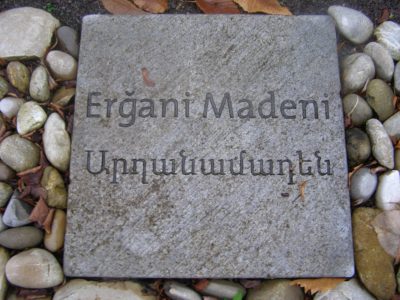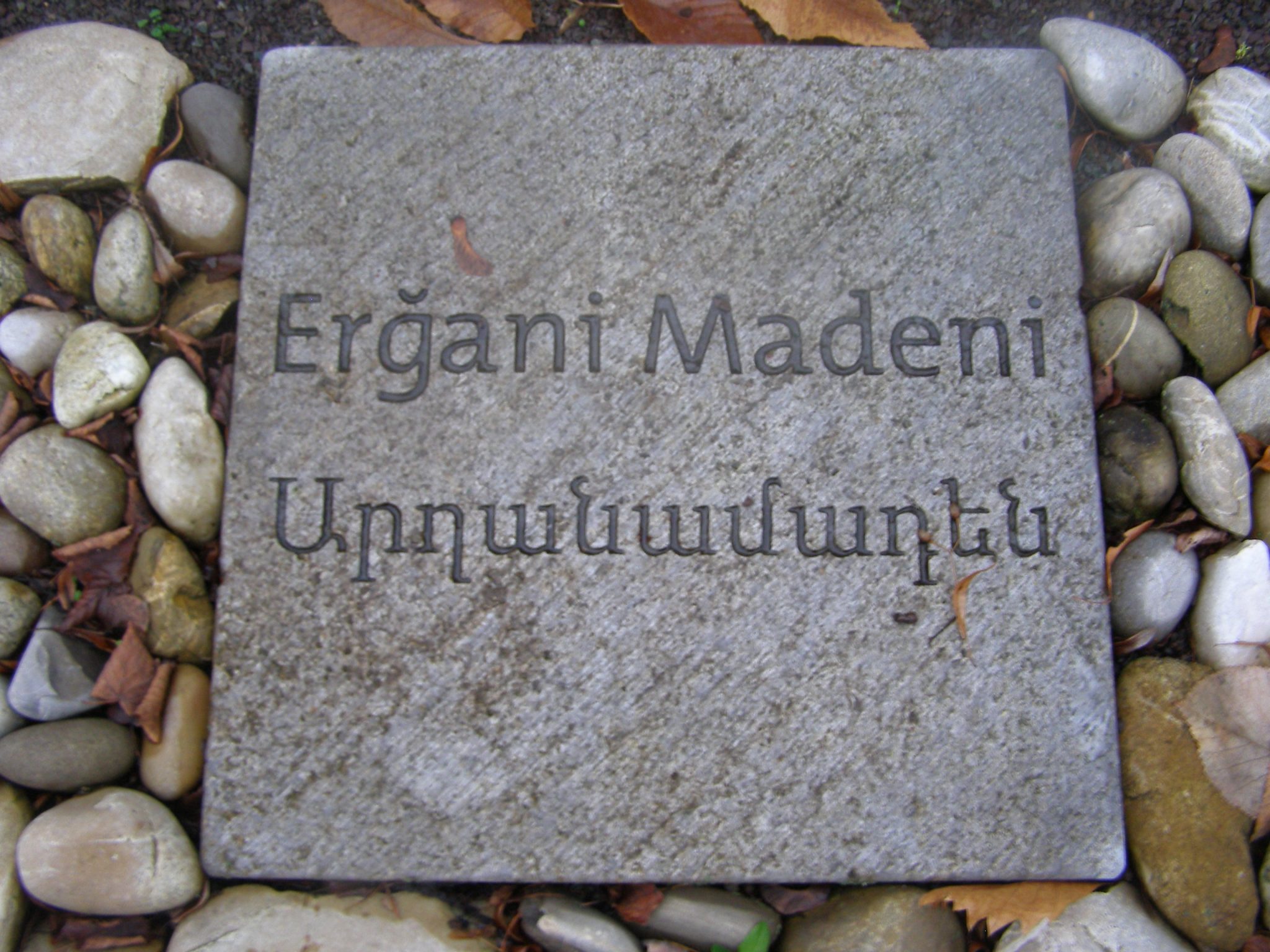
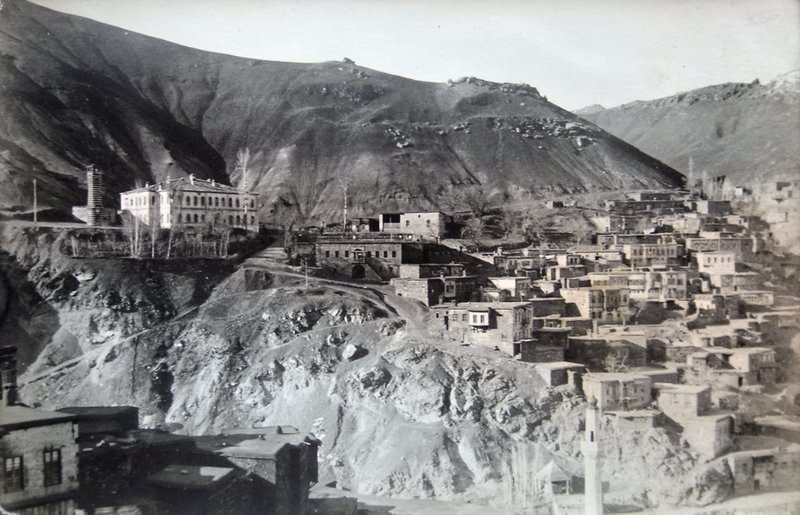
Armenian Population
According to the census of the Armenian Patriarchate of Constantinople, 10,559 Armenians lived in eleven localities of the kaza before 1914, maintaining ten churches, two monasteries and seven schools with 700 students.[1]
The Armenian population of the kaza was eliminated in July 1915, “at the same time as the inhabitants of Chnkush [today Çüngüş], in the place known as Yudan Dere; this was a chasm lying on the border between this kaza and the kaza of Çermik, where an underground river fed the sources of the Tigris. However, no survivor seems to have left an account of these crimes, apart from one witness the events that took place in Göljük [Gölcük Gölü; today: Hazar Gölü], a little town lying on the shore of the mountain lake that is the source of the Tigris.”[2]
Çüngüş / Chnkush: “…a large and flourishing Armenian town”
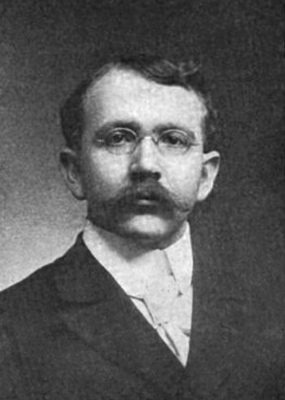
Returning to Harput from Diyarbekir, American missionary Henry H. Riggs encountered deported and shackled Armenians from Chnkush in the summer of 1915:
“About four hours out [Diyarbekir] we met a company of men marching towards Diarbekir. They were under guard, and as they drew near, I recognized them as Armenian men from the town of Chunkoush, one of our mission outstations, and a large and flourishing Armenian town. I recognized several men among them, one of whom was the priest. They marched by, not daring to speak to me. Most of them were bound, though a few feeble old men were riding on donkeys unbound.
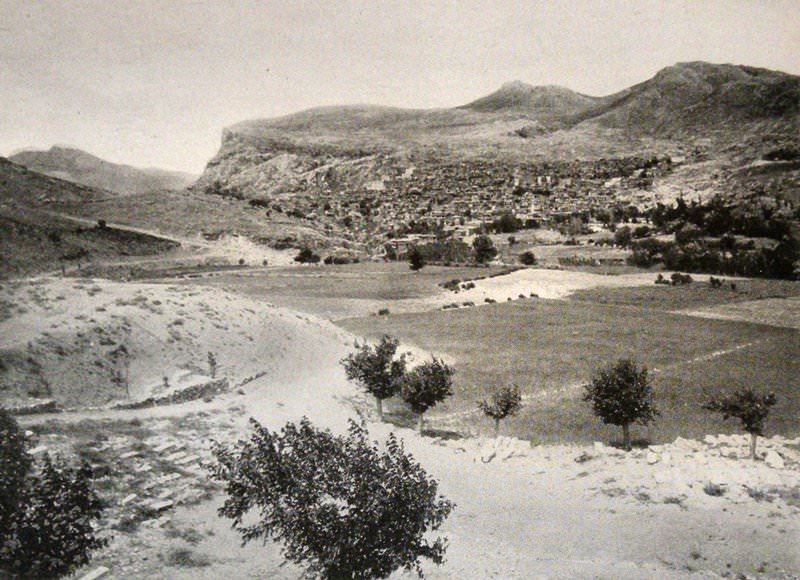
As I passed, one man, looking at me quickly, lifted four fingers. That was all, and for a time I could not imagine what his signal was intended to convey. I soon found out, however. In a few minutes I came to a spot in the road where the dust had hardly absorbed a pool of fresh blood. A trail through the dust from the scene of the tragedy to the edge of the bluff beside the road showed plainly enough where the body had been dragged from the road and dropped into the river which flowed just under the bluff. A little further on I came to the place where the party had evidently stopped for lunch. There lay the bodies of two elderly Armenians. They had been stripped except for their shirts, and were laid in such a position as to expose their persons to the ridicule of passersby, and on the abdomen of each was cast a large stone. They had evidently been murdered there at the noon hour and then the brutal guards had stopped to leave behind them the signs not only of violence, but of mockery and insult. A little further on yet, we passed the fourth ghastly trophy of that march of the exiles. That was the beginning of the end of Chunkoush. After returning to Harpoot I saw the widow of the Protestant pastor of Chunkoush. Her husband had been murdered in prison, and the officials had had the refinement of brutality to send her his bloodstained clothes. After her escape to Harpoot, we heard no more definitely from that town, and I have heard of no further survivors of that town of five thousand people. Rumor has it that the people were driven out in a body to point about ten miles away where a famous cavern drops vertically downward several hundred feet. The entire population of the town were said to have been driven to their death in this cavern.”
Excerpted from: Henry H. Riggs: Days of Tragedy in Armenia: Personal Experiences in Harpoot, 1915-1917. Ann Arbor, MA: Gomidas Institute, 1997, p. 57f.
